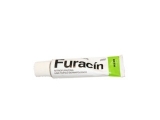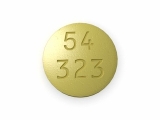Pharmaceuticals in the water
In recent years, scientists and environmentalists have raised concerns about the presence of pharmaceuticals in our water supply, shedding light on a potential environmental and health crisis. With the increased use of prescription and over-the-counter medications, as well as the improper disposal of unused drugs, these compounds have found their way into our rivers, lakes, and even drinking water sources.
The presence of pharmaceuticals in our water supply raises important questions about the impact on aquatic life and human health. Preliminary studies have shown that certain medications, even at low concentrations, can disrupt the endocrine system of fish and other aquatic organisms, affecting their reproductive and developmental processes. Additionally, trace amounts of antibiotics in the water may contribute to the development of antibiotic-resistant bacteria, posing a significant threat to public health.
The issue of pharmaceutical contamination in our water supply is not limited to specific regions or countries. It is a global problem that requires urgent attention and collaborative efforts to address. Governments, pharmaceutical manufacturers, healthcare professionals, and individuals all have a role to play in minimizing the impact of pharmaceuticals on our environment and health. Through proper medication disposal, improved wastewater treatment processes, and responsible prescribing practices, we can work towards ensuring the purity and safety of our water supply.
The Hidden Effects of Medication in Our Drinking Water
1. Introduction
Many people are not aware of the fact that the medications they take can end up in our drinking water. This is a growing concern as studies have shown that these pharmaceuticals can have negative effects on both human health and the environment. In this article, we will explore the hidden effects of medication in our drinking water and the potential risks they pose.
2. Medications in our Water Supply
It is estimated that billions of doses of prescription and over-the-counter medications are consumed each year, and a significant portion of these drugs are excreted by the human body. Wastewater treatment plants are not designed to remove all of these medications, and as a result, they can end up in our rivers, lakes, and ultimately, our drinking water. This issue affects communities around the world, and the extent of the contamination varies depending on factors such as population density and the efficiency of wastewater treatment systems.
3. Human Health Concerns
Research has shown that even low levels of pharmaceuticals in drinking water can have adverse effects on human health. For example, certain medications such as antibiotics and hormones can disrupt the natural balance of bacteria in our bodies, leading to the development of antibiotic-resistant bacteria and hormonal imbalances. Additionally, studies have linked long-term exposure to pharmaceuticals in drinking water to an increased risk of certain health conditions, including liver and kidney damage.
4. Environmental Impact
The presence of pharmaceuticals in our water supply also has significant environmental implications. These chemicals can affect aquatic life, including fish and other organisms. They can disrupt the reproductive systems of animals, change their behavior, and even lead to population declines. Furthermore, the accumulation of medications in the environment can potentially enter the food chain, as animals consume contaminated water sources and plants.
5. Solutions and Future Directions
Addressing the issue of medication in our drinking water requires a multi-faceted approach. This includes improving wastewater treatment processes to better remove pharmaceuticals, promoting proper medication disposal practices, and educating the public about the potential risks. Governments, environmental agencies, and pharmaceutical companies all have a role to play in developing and implementing solutions. Additionally, further research is needed to better understand the long-term effects and potential risks associated with pharmaceuticals in our water supply.
Overall, the hidden effects of medication in our drinking water are a cause for concern. It is crucial that we take action to mitigate this issue and protect both human health and the environment.
Understanding the Presence of Pharmaceuticals
The presence of pharmaceuticals in our water supply is a growing concern with potential implications for human health and the environment. Pharmaceuticals are a class of compounds that are designed to have specific effects on the human body, and they can enter the water supply through a variety of pathways.
One of the main pathways for pharmaceuticals to enter the water supply is through the excretion of drugs by humans and animals. When we take medications, some of the active compounds are metabolized by our bodies and excreted in urine and feces. These compounds can then find their way into wastewater treatment plants, where they may not be effectively removed before the treated water is discharged into rivers or lakes.
Another pathway for pharmaceuticals into the water supply is through improper disposal of medications. Many people dispose of unused or expired medications by flushing them down the toilet or sink. This direct disposal bypasses the wastewater treatment plants, allowing the drugs to enter the water supply in their original form.
Once in the water supply, pharmaceuticals can persist and accumulate over time. Some drugs are designed to be stable and long-lasting, which means they can remain in the water for extended periods. Additionally, the accumulation of pharmaceuticals in the environment can occur because they may not be efficiently broken down by natural processes or that the concentrations of these chemicals may be too low to be effectively removed by water treatment processes.
The impact of pharmaceuticals in the water supply is still being studied, but research has shown potential risks to aquatic organisms and potential effects on human health. It is clear that further research and action are needed to better understand and address the presence of pharmaceuticals in our water supply.
The Potential Risks to Human Health
As pharmaceuticals enter our water supply through various means, such as discarded medication, excretion, and inadequate wastewater treatment, they pose potential risks to human health. These risks can manifest in several ways as people are exposed to trace amounts of pharmaceuticals through drinking water, consuming contaminated fish or other seafood, or even through direct contact with contaminated water bodies.
The primary concern is the potential for these pharmaceuticals to have adverse effects on human health. Studies have shown that exposure to certain pharmaceuticals, even at low concentrations, can lead to a range of health issues, including hormonal disruptions, developmental and reproductive disorders, and antibiotic resistance.
Furthermore, the long-term exposure to pharmaceuticals in our water supply can have cumulative effects on human health. While low levels of individual pharmaceuticals may not be immediately harmful, the combination of multiple pharmaceuticals and their metabolites can lead to a "cocktail effect" where the synergistic interactions between different compounds create new and unforeseen health risks.
It is important to note that vulnerable populations, such as infants, children, pregnant women, and individuals with compromised immune systems, may be more susceptible to the potential risks associated with exposure to pharmaceuticals in water. Therefore, implementing measures to mitigate the presence of pharmaceuticals and improve water treatment processes is critical to safeguarding public health.
References:
- Nguyen, H. T., & Henkel, J. (2019). Occurrence and potential human health risks of pharmaceuticals in a drinking water source for a major metropolitan area. Water research, 157, 480-489.
- Li, Z., Xie, G., Huang, M., & Wang, D. (2020). Unveiling the impact of pharmaceuticals in our water supply: A review on occurrence, analytical techniques, and potential risks to human health. Science of the Total Environment, 712, 136281.
Environmental Impact and Ecosystem Disruption
Elevated levels of pharmaceuticals in water supplies can have a significant environmental impact and disrupt ecosystems. These drugs can enter natural water sources through a variety of routes, including through human waste and unused medication being flushed down the toilet or washed down the sink.
Once in the water supply, pharmaceuticals can persist for long periods of time and contaminate aquatic environments. This contamination can have adverse effects on fish, birds, and other aquatic organisms. Studies have shown that exposure to certain medications can impair reproduction, disrupt hormonal systems, and even lead to behavior and physical changes in these organisms.
The presence of pharmaceuticals in water can also have cascading effects on entire ecosystems. For example, when medications contaminate streams or rivers, they can impact the organisms living downstream. This can disrupt the food chain and have ripple effects throughout the ecosystem, potentially leading to declines in biodiversity and ecosystem stability.
Furthermore, the presence of pharmaceuticals in water supplies can also have implications for human health. While the impact of low levels of pharmaceutical contamination on humans is not well understood, there is concern that long-term exposure to these substances could have harmful effects.
The Need for Action
Given the potential environmental and human health risks associated with pharmaceutical contamination in water supplies, it is crucial that steps are taken to address this issue. Efforts should be made to improve wastewater treatment processes to remove pharmaceutical compounds. Additionally, there is a need for stricter regulations and guidelines regarding the disposal of unused medications to prevent them from entering the water supply.
Education and awareness are also key in addressing this issue. The public should be informed about the potential impacts of pharmaceutical contamination and encouraged to take proper disposal measures. This can include participating in medication take-back programs or using disposal methods that do not involve flushing medications down the toilet or sink.
Overall, it is important to recognize the potential environmental impact and ecosystem disruption caused by pharmaceuticals in our water supply. By taking action and implementing measures to reduce contamination, we can help protect both the environment and our own well-being.
Regulatory Measures and Monitoring Efforts
Regulatory agencies around the world have recognized the potential threat of pharmaceuticals in our water supply and have implemented measures to address this issue. These measures include setting maximum contaminant levels for certain pharmaceuticals in drinking water, as well as establishing guidelines for their safe use and disposal. By regulating the manufacturing and distribution of pharmaceuticals, these agencies aim to minimize their impact on the environment and human health.
Monitoring efforts play a crucial role in assessing the presence and concentrations of pharmaceuticals in water sources. Water treatment plants and laboratories conduct regular testing to detect and quantify pharmaceutical residues. Advanced analytical techniques, such as liquid chromatography-mass spectrometry, are used to identify and measure the levels of various pharmaceutical compounds. These monitoring efforts provide valuable data for regulatory decision-making and help inform management strategies to reduce pharmaceutical contamination.
International collaborations and initiatives have been established to enhance the coordination of regulatory measures and monitoring efforts. For example, the World Health Organization (WHO) and the United Nations Environment Programme (UNEP) have partnered to develop guidelines and promote research on the environmental impact of pharmaceuticals. Such collaborations facilitate the sharing of best practices and the development of standardized methods for monitoring and assessing pharmaceutical contamination globally.
In addition to regulatory measures and monitoring efforts, public awareness and education also play a critical role in addressing the issue of pharmaceuticals in our water supply. Educational campaigns and outreach programs aim to inform the public about the potential risks associated with improper disposal of pharmaceuticals and encourage responsible use and disposal. By promoting proper medication disposal and raising awareness about the environmental consequences of pharmaceutical contamination, individuals can contribute to the overall reduction of pharmaceuticals in our water supply.
Technologies for Removal and Treatment
Various technologies are being employed to remove and treat pharmaceuticals in our water supply, ensuring the safety of our drinking water. Some of these technologies include:
Activated Carbon Filtration
Activated carbon filtration is one of the most commonly used methods for removing pharmaceuticals from water. Activated carbon filters work by adsorbing contaminants onto their surface, effectively trapping them and preventing them from passing through the filter. This technology is effective in removing a wide range of pharmaceuticals, including antibiotics, hormone medications, and painkillers.
Reverse Osmosis
Reverse osmosis is another technology used for the treatment and removal of pharmaceuticals. It involves forcing water through a semi-permeable membrane, which traps contaminants and allows only pure water to pass through. Reverse osmosis is highly effective in removing pharmaceuticals, as well as other contaminants such as heavy metals and pesticides.
Chemical Oxidation
Chemical oxidation is a process that involves the use of chemicals to break down and remove pharmaceuticals from water. One common chemical used for oxidation is hydrogen peroxide. When hydrogen peroxide is added to water, it reacts with the pharmaceuticals, breaking them down into simpler, less harmful compounds. This technology is effective in treating a wide range of pharmaceuticals, including antibiotics, antidepressants, and anticonvulsants.
Advanced Oxidation Processes
Advanced oxidation processes (AOPs) involve the use of powerful oxidizing agents and/or ultraviolet light to transform pharmaceuticals into non-toxic compounds. AOPs are capable of degrading a wide range of pharmaceuticals, including highly persistent and resistant compounds. This technology is particularly effective in treating wastewater and has the potential to remove the majority of pharmaceuticals present in water.
Membrane Bioreactors
Membrane bioreactors (MBRs) combine biological treatment with membrane filtration to remove pharmaceuticals from water. The process involves using microorganisms to break down and metabolize pharmaceuticals, while the membrane filtration step helps to separate the treated water from the microorganisms and remaining contaminants. MBRs are effective in removing a variety of pharmaceuticals, including antibiotics, antivirals, and antidepressants.
Raising Awareness and Promoting Sustainable Practices
As the presence of pharmaceuticals in our water supply continues to be a growing concern, it is crucial to raise awareness about the potential risks and promote sustainable practices to minimize this impact.
One way to raise awareness is through educational campaigns that inform the public about the environmental and health risks associated with pharmaceuticals in water. These campaigns can be conducted through various channels, such as social media, public service announcements, and community workshops. By disseminating factual information and highlighting the importance of proper disposal and wastewater treatment, these campaigns can empower individuals to take action and make informed choices.
In addition to raising awareness, promoting sustainable practices is key to reducing the presence of pharmaceuticals in our water supply. One effective approach is to encourage proper medication disposal. Many people are unaware that flushing unused or expired medications down the toilet can contribute to the problem. By providing accessible and convenient medication take-back programs and educating individuals on the proper disposal methods, we can prevent these substances from entering our water systems.
Furthermore, promoting sustainable agriculture practices can also play a role in minimizing the impact of pharmaceuticals in our water supply. For instance, reducing the use of pharmaceuticals in animal farming and promoting organic and sustainable farming practices can decrease the amount of pharmaceuticals entering our water systems through agricultural runoff. This requires educating farmers and providing support for the transition to more sustainable farming methods.
Follow us on Twitter @Pharmaceuticals #Pharmacy
Subscribe on YouTube @PharmaceuticalsYouTube





Be the first to comment on "Pharmaceuticals in the water"